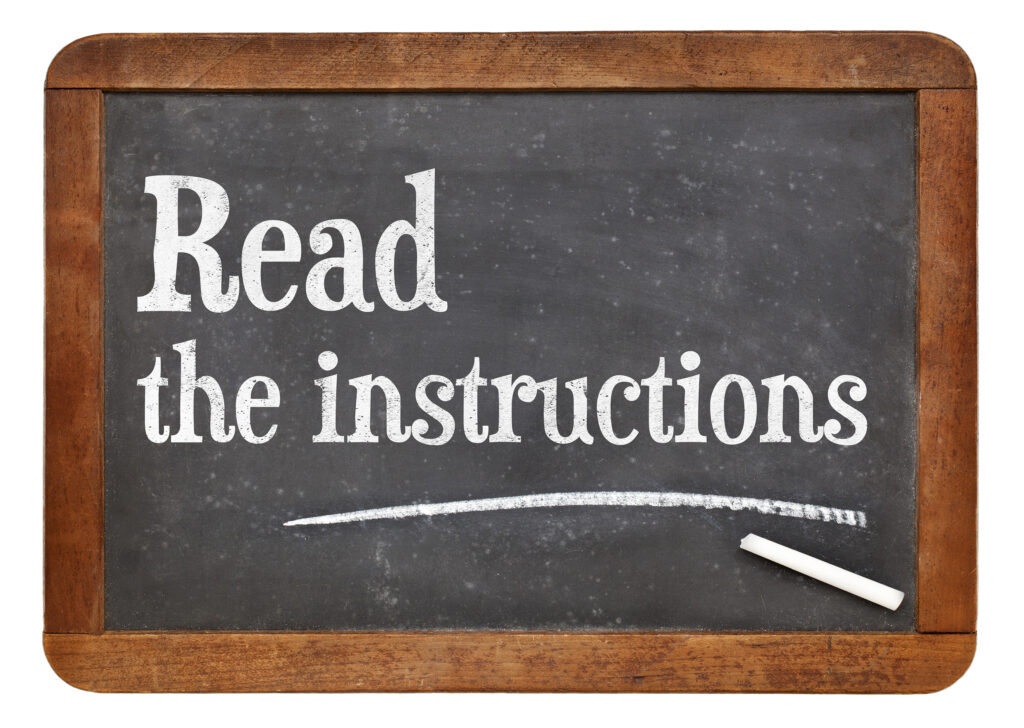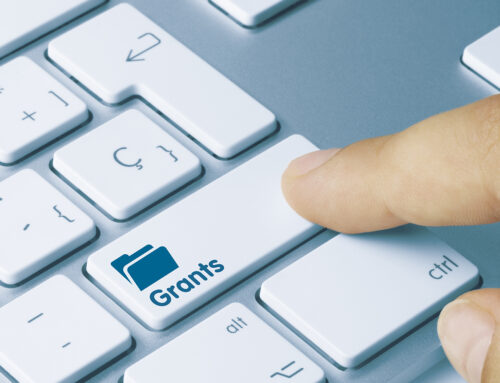
One of the most common questions we get from leaders of new and small nonprofits is how to write a grant so they can tap into grant funding.
It sounds like this: “How do I write a grant? Where can I get a list of grants to apply for? Where are the big-money grants? How do I get the grant money rolling in?”
The unspoken part of the question is “How do I get grants so I don’t have to fundraise?”
You see, people mistakenly think that they can get grant money pouring in and fully fund their budget solely from grants. Then they won’t have to ask anyone for a donation.
Yeah, no. It doesn’t work that way.
Grants are not a magic bullet. It takes a lot of work to get a grant and there’s plenty to do before you start submitting grants.
There is no master list of grants every nonprofit should apply for. You have to research, combining through databases to find the grant opportunities that seem to be a good fit for you.
It can take time—years—to cultivate relationships with funders to the point where they will give your organization even a small grant.
And just the process itself of applying for grants can take hours and hours and hours.
Look, grant funding is an important piece of the revenue pie for many nonprofits. But grants are not easy money. You will earn every dime you get from a family foundation, local business, corporation, government agency, or grantmaking nonprofit organization.
And grants should never represent the majority of your funding. You could get a letter today awarding you a large grant for a new program, and next year you could get a rejection letter for the same program, even if you showed positive outcomes.
For most nonprofits, your funding pie should not be more than 25 percent grants. And you should never assume that grants will be renewed year after year.
Finally, grants are competitive and the responsibility is on your shoulders to persuade a funder to award a grant to your nonprofit. You won’t get a grant just because you run a nonprofit and you’re doing good in the world.
Alright, if I haven’t scared you off, let’s look at what it takes to get ready to go after and get grants for your small nonprofit.
Get Ready to Write a Grant
Here are five things you need to do just to get ready to write a grant:
1. Be sure your organization is ready to apply for grants. Here are some points to consider when determining if the time is right:
 2. Do your research. When you take the time to thoroughly research grant opportunities, you save time writing grants your organization is not going to get. You are looking for a great match- a funder that funds similar-sized organizations in your region.
2. Do your research. When you take the time to thoroughly research grant opportunities, you save time writing grants your organization is not going to get. You are looking for a great match- a funder that funds similar-sized organizations in your region.
You also want a funder that provides the type of funds you need: program, capital, operating, or capacity-building. Note: Program funding is the easiest to access, especially when you are just getting started.
Before you start researching grants, set up a grant prospecting spreadsheet, so you can track relevant information.
Next, find a grant research tool. While there are a few places you can search for grants for free, you need to be ready to invest a little to find a good tool. We use and recommend Foundation Directory Online. It’s a searchable database that lets you find grant prospects based on keyword or location, which saves you a lot of time. Contact your local library to see if they can help you get access (sometimes they can send you a code for 24-hour access).
Instrumentl offers a two-week free trial. GrantStation is affordable, and you may be able to get a discount from TechSoup. These databases have demos to help you get started and are easy to use once you get the hang of them.
Type in your criteria and start looking for opportunities. When you find a potential match, enter the foundation name, contact information, deadline, and other details into your grant prospect spreadsheet.
Then rank each foundation on a scale of one to four based on how likely the foundation is to be a good match, with one being “maybe but probably not,” and four being, “great chance of being a match.”
Tip: If the funder accepts proposals by invitation only, you can put it on your spreadsheet, but rank it as a 1. You can pursue a contact at the foundation and request an invitation.
Aim for a list of 10 to 20 potential grant opportunities, with at least half graded as a 3 or 4.
You can flesh out your prospecting worksheet by including any grants your organization got in the past that you might be able to get again. And you can review the websites of peer organizations to see if they list their funders.
3. Initiate contact. Developing a relationship with a foundation can greatly increase your chances of being awarded a grant.
Find a way to get an audience with the funder, by phone, email, or in person, so you can introduce your nonprofit, ask questions about the grant submission process, and pitch your funding need to gauge their interest.
Of course, ask your Board if they have any contacts at the foundations you are planning to approach because that can help you get your foot in the door or get your application placed on the top of the pile.
If you have made a connection, your submission will carry more weight. Someone will remember your nonprofit’s name or your project.
Some foundations do not want to be contacted. They will let you know in their guidelines. Honor the foundation’s wishes at all times.

4. Read the instructions. We all know we should read the instructions before operating a new appliance. But do we do that? In most cases, we don’t. Sometimes, we just like to try it ourselves until our way doesn’t work. When all else fails, read the instructions. Right?
With grants, it’s critical to read the instructions FIRST. There are no do-overs with grants. You need to get it right the first time. By the time you find a foundation that accepts unsolicited proposals and has a history of funding organizations similar to yours, you have invested a lot of time. Don’t fumble the ball on the one yard line by failing to heed the guidelines as you write a grant.
Funders provide guidelines that spell out the instructions, and when you don’t follow those instructions, you give them an easy excuse to reject your application.
Here is the type of guidance funders usually provide:
- Grant submission process: When is the proposal due? How do you submit it? Most grants these days are submitted via an online portal or by email. You will probably be asked to submit a PDF. If that’s the case, don’t send a Word doc.
- Narratives: Grant writers used to have to adhere just to word limits, and now we often have to stick to character limits. Choose your words carefully, and capture the essence of your program. What makes this program urgently needed? What makes this program unique, beautiful, and heart-expanding?
- Budgets: Work with your treasurer to make sure you send the financial documents requested. The operating budget is your Board-approved budget for the year. A program budget is for the particular program you are seeking funding for. If you are seeking capital funds for a new building or an addition, you will need a budget.
- Attachments: Include everything a funder requests and only what they request. Funders often ask for a list of Board members along with specific information about each Board member, which can take a minute to pull together. You may also be asked to provide a list of current and past funders, links to news articles, and letters of support from partner nonprofits.
- Deadline: In the grants world, there is no grace period following a deadline. The deadline is the deadline. Submit early in case you encounter technical glitches.
It never hurts to re-read the instructions before submitting, just so you’re clear about what needs to be done. Good grant writers read the instructions over and over, highlighting deadlines and making notes about unusual information requests. And then the grant writer will read the instructions one last time before submitting.

5. Start early! Applying for grants takes time. There are a lot of moving parts. Here are my tips for getting started as you prepare to write a grant:
Identify your Grants Team: Your Grants Team should not be a team of one, especially if that person has other responsibilities as well. Get everyone on board whose support might be needed to get a proposal to the finish line. This includes leadership, program management, and finance. You might need input from volunteers about programs.
Get Board members on board as well. You need them to be on the lookout for opportunities, constantly networking and talking up the organization. Get everyone excited about securing grant funding and the dreams the organization can pursue with more funding. Let everyone know the organization is building a grants program to fully fund the organization’s mission and vision.
Add lead time: Allot plenty of time to pull a grant together. Give others who need to provide information plenty of time to do so, especially if they have to create a new document with the requested information included. Everyone is busy all the time in the nonprofit world.
You don’t want to feel rushed or pressured, especially when you are writing the critical narrative text. If you work slowly and steadily toward the completion and submission of each grant, an illness or other unforeseen circumstance won’t cause you to miss the deadline. And you will have time to proofread one last time before hitting the submit button.
Make grant writing part of your organization’s routine: If making time to write a grant is always an extra thing everyone has to do on top of everything else, you won’t succeed in capturing all the grant revenue available to your organization. You have to integrate grant writing into your organization’s workflow.
If you have a checklist of things you do on Monday morning, add, “check grants calendar and make a list of grant-related tasks that need to get done by the end of the week.”
The Bottom Line
It takes time to learn the skills to go after and get grants. Grant writing is a course taught in college, often at the master’s level. It’s a career, an occupation, that takes years to master. Be patient with the process and accept that building your grants program will take years. But at some point, sitting down to write a grant will not be intimidating or confusing. You might actually enjoy it!
It’s an awesome feeling when you hit your groove and can successfully get grants year after year to help fully fund your mission. Keep your eye on that goal! With more money coming in, you can grow your programs and change more lives.

 Do you have a program or need that funders would want to fund? The easiest type of funding to secure is for a new or expanding program. Think about the work your organization does and what you might be able to package as a program in need of funding.
Do you have a program or need that funders would want to fund? The easiest type of funding to secure is for a new or expanding program. Think about the work your organization does and what you might be able to package as a program in need of funding.




I’m in need of grant and fundraising.
Hi Jonathan, if you need more help with your grant writing and fundraising, take a look at our Project SmartSprout program at projectsmartsprout.com.
reading your your articles is so eye catching and captivating.I really dont know best i can get grants to pursue my ideas and i will be so glad if am guided on this